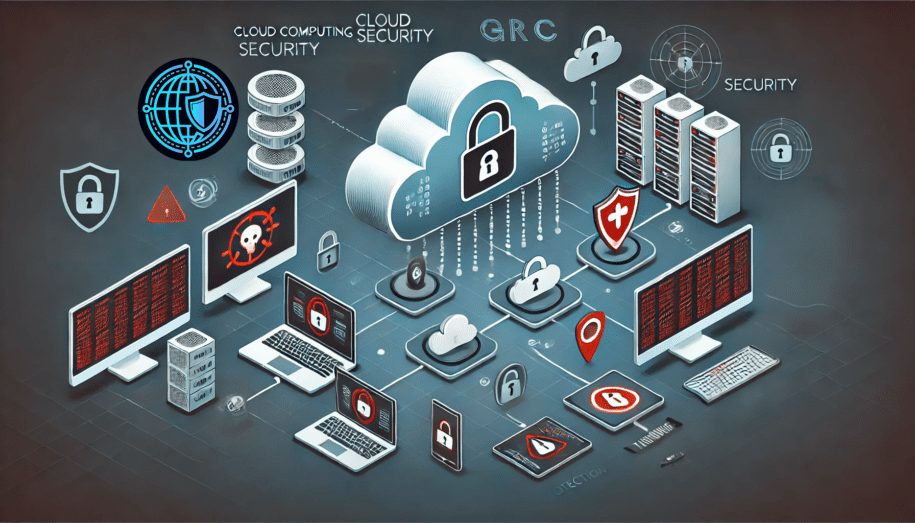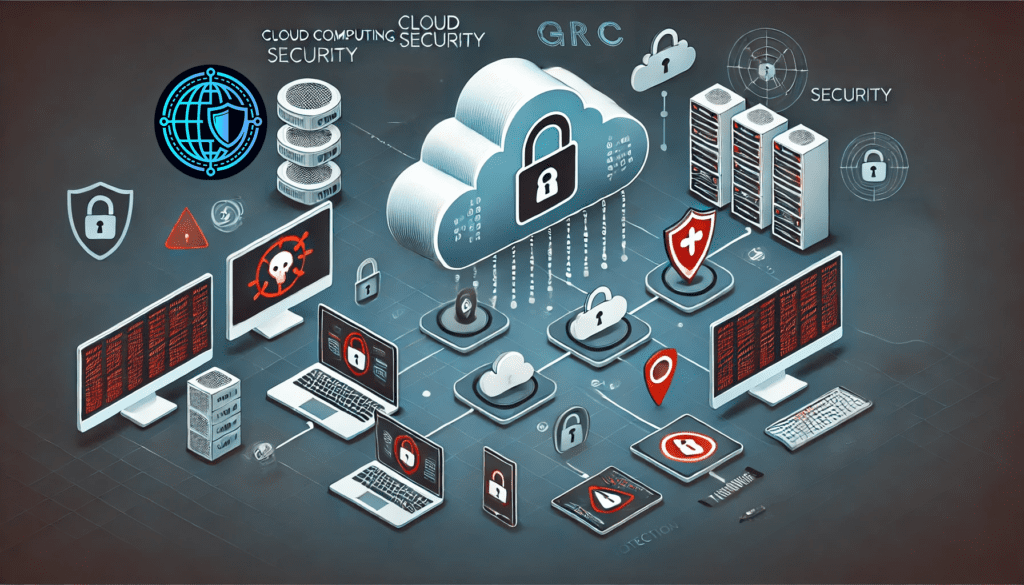The rapid adoption of cloud computing has transformed how organizations operate, offering unparalleled agility, scalability, and cost-efficiency. However, this shift to the cloud also brings unique challenges related to governance, risk, and compliance (GRC). Properly addressing these aspects is crucial for ensuring security, managing risks, and maintaining regulatory compliance in a cloud environment.
Importance of Governance, Risk, and Compliance in the Cloud
Ensuring Security and Privacy:
Governance frameworks in the cloud help establish security policies and procedures to protect sensitive data. With the increasing frequency and sophistication of cyberattacks, maintaining robust security measures is essential. GRC ensures that security practices are consistent and comprehensive, covering all aspects of the cloud infrastructure.Managing Risks Effectively:
Risk management in the cloud involves identifying, assessing, and mitigating potential threats to an organization’s data and operations. GRC provides a structured approach to risk management, ensuring that risks are continuously monitored and mitigated. This proactive stance is critical in preventing data breaches, downtime, and other disruptions.Compliance with Regulations:
Regulatory compliance is mandatory for many industries. GRC frameworks ensure that cloud operations adhere to legal and regulatory requirements such as GDPR, HIPAA, and SOX. This not only helps avoid hefty fines and legal issues but also builds trust with customers and stakeholders.Enhancing Operational Efficiency:
By implementing GRC, organizations can streamline their operations through standardized procedures and automated compliance checks. This reduces the complexity of managing multiple regulatory requirements and enhances overall operational efficiency.
How to Implement Governance, Risk, and Compliance in the Cloud
Revisit and Review the GRC Framework:
Start by reviewing the existing GRC framework to identify gaps and areas that need improvement. Understand the organization’s key business objectives and processes to ensure the framework aligns with them.Select a GRC Solution:
Choose a suitable GRC solution that meets your organization’s needs. Cloud-based GRC tools such as RSA Archer, Riskonnect, and BWise offer various features to facilitate implementation. Ensure the chosen solution supports scalability and integration with existing systems.Plan the Implementation:
Develop a detailed implementation plan. This involves assigning roles and responsibilities, defining timelines, and conducting a risk assessment. Engage with cloud vendors to understand their compliance offerings and ensure they align with your GRC requirements.Implement GRC Practices:
Deploy the selected GRC tools and integrate them with your cloud environment. Ensure that all relevant policies, procedures, and controls are in place. Train employees on new GRC practices and ensure they understand their roles in maintaining compliance.Monitor and Improvise:
Continuous monitoring is essential for the success of a GRC program. Regularly review and update GRC policies to adapt to new threats and regulatory changes. Use automated tools to monitor compliance and generate reports to keep stakeholders informed.
Best Practices for Effective Governance, Risk, and Compliance in the Cloud
- Identify GRC Objectives: Clearly define your GRC goals and objectives. Align them with business processes and choose appropriate technologies to support them.
- Simplify Risk and Compliance Policies: Ensure policies are straightforward and accessible to all employees. Regularly communicate and update these policies.
- Leverage Technology Tools Effectively: Evaluate GRC tools for their effectiveness in meeting your objectives. Select tools that offer intuitive interfaces and easy deployment.
- Pilot Deployment: Test the deployment on a small scale to measure its effectiveness before a full-scale rollout.
- Improve Cloud Asset Visibility: Maintain comprehensive visibility of all cloud assets and services. Ensure proper classification and management of data based on its sensitivity.
- Assess CSPs Continuously: Regularly evaluate cloud service providers (CSPs) to ensure they meet security and compliance standards.
- Assign Accountability: Clearly define and assign responsibilities for managing cloud services and assets.
- Discover Cloud Threats: Stay informed about the latest cloud security threats and proactively address them.
- Use Standard Risk/Control Frameworks: Adopt recognized frameworks like ISO/IEC 27017, NIST, or CSA’s GRC stack to assess compliance.
- Automation and Optimization: Automate GRC processes to enhance efficiency and ensure continuous compliance.
Benefits and ROI of GRC in the Cloud
Enhanced Security:
A robust GRC framework ensures that all security measures are consistently applied across the cloud environment. This reduces the risk of data breaches and other security incidents.Improved Risk Management:
GRC provides a structured approach to identifying and mitigating risks. Continuous monitoring and automated controls help in proactively managing risks.Regulatory Compliance:
GRC frameworks help organizations stay compliant with various regulatory requirements. This avoids legal issues and builds trust with customers and stakeholders.Operational Efficiency:
Standardized procedures and automated compliance checks streamline operations, reducing the complexity of managing multiple regulatory requirements.Cost Savings:
By preventing data breaches, avoiding fines, and reducing the complexity of compliance management, GRC in the cloud can lead to significant cost savings.
ROI of GRC in the Cloud
Reduced Risk of Fines and Legal Costs:
Compliance with regulatory requirements helps avoid fines and legal expenses. This alone can justify the investment in GRC tools and processes.Lower Incident Response Costs:
Effective risk management reduces the likelihood and impact of security incidents, lowering the costs associated with incident response and recovery.Increased Productivity:
Automation of GRC processes frees up resources that can be used for other critical business functions, enhancing overall productivity.Better Decision Making:
Access to comprehensive risk and compliance data helps in making informed business decisions, leading to improved outcomes and strategic advantages.
Implementing Governance, Risk, and Compliance (GRC) in Google Cloud Platform (GCP)
Governance, Risk, and Compliance (GRC) are critical components in managing a secure, efficient, and compliant cloud environment. Google Cloud Platform (GCP) offers a variety of inbuilt features and tools to facilitate effective GRC. This section discusses how to implement GRC in GCP, leveraging its comprehensive suite of services to ensure robust security, effective risk management, and compliance with regulatory standards.
Understanding GRC in GCP
Governance, Risk, and Compliance in GCP encompasses the policies, procedures, and technologies used to manage and mitigate risk, ensure compliance with regulations, and govern cloud operations. GCP provides several tools and frameworks to help organizations establish a strong GRC foundation, including the Cloud Security Command Center, Google Security and Trust Center, Identity Platform, and Cloud Identity and Access Management (IAM).
Inbuilt Features for Governance and Risk Management in GCP
Cloud Security Command Center
GCP’s Cloud Security Command Center (Cloud SCC) offers real-time visibility into cloud resources, helping to detect vulnerabilities, threats, and malicious activities. It supports:
- Near real-time visibility into GCP resources and policies.
- Security monitoring for misconfigurations and web app vulnerabilities.
- Threat detection for malicious activities and unauthorized behaviors.
- Compliance violations detection based on industry standards and benchmarks.
Google Security and Trust Center
The Google Security and Trust Center provides secure infrastructure with built-in protection, ensuring that user applications and data are safeguarded. It includes:
- Secure design infrastructure with built-in protection.
- Default encryption at rest and in transit.
- Independent verification of security compliance to meet regulatory and policy objectives.
Identity Platform
The Identity Platform in GCP is a Customer Identity and Access Management (CIAM) service that helps organizations implement IAM into their applications, coordinating security policies with internal and external partners to manage risks effectively.
Cloud Identity and Access Management (IAM)
Cloud IAM offers centralized management of cloud resources, enforcing the principle of least privilege and separation of duties. It helps establish organizational security policies and coordinates roles and responsibilities.
Best Practices for Effective Governance, Risk, and Compliance in GCP
- Identify GRC Objectives: Clearly define your GRC goals and objectives. Align them with business processes and choose appropriate technologies to support them. This involves understanding the regulatory requirements relevant to your industry and mapping them to GCP’s capabilities.
- Simplify Risk and Compliance Policies: Ensure policies are straightforward and accessible to all employees. Regularly communicate and update these policies to reflect changes in the regulatory landscape or organizational structure. Simple and clear policies are easier to enforce and follow.
- Leverage Technology Tools Effectively: Evaluate GRC tools for their effectiveness in meeting your objectives. Select tools that offer intuitive interfaces and easy deployment. GCP provides various tools like the Cloud Security Command Center, Policy Intelligence, and Google Vault for comprehensive GRC management.
- Pilot Deployment: Test the deployment on a small scale to measure its effectiveness before a full-scale rollout. This helps identify potential issues and refine processes to ensure smooth implementation across the organization.
- Improve Cloud Asset Visibility: Maintain comprehensive visibility of all cloud assets and services. Ensure proper classification and management of data based on its sensitivity. Tools like the Cloud Security Command Center provide real-time insights into cloud resources.
- Assess Cloud Service Providers Continuously: Regularly evaluate cloud service providers (CSPs) to ensure they meet security and compliance standards. Continuous assessment helps in maintaining a secure and compliant cloud environment.
- Assign Accountability: Clearly define and assign responsibilities for managing cloud services and assets. Accountability ensures that there is always a responsible party for security, compliance, and risk management tasks.
- Discover Cloud Threats: Stay informed about the latest cloud security threats and proactively address them. GCP’s threat detection capabilities in the Cloud Security Command Center help in identifying and mitigating potential threats.
- Use Standard Risk/Control Frameworks: Adopt recognized frameworks like ISO/IEC 27017, NIST, or CSA’s GRC stack to assess compliance. Standard frameworks provide a structured approach to risk management and compliance.
- Automation and Optimization: Automate GRC processes to enhance efficiency and ensure continuous compliance. Automation reduces the manual effort involved in compliance management and helps in maintaining consistency.
Implementing GRC Tools in GCP
Google Cloud Policy Intelligence
Google Cloud Policy Intelligence helps in the automated management of policies to reduce security risks. It includes:
- IAM Recommender: Uses machine learning to enforce least privilege by detecting and revoking unnecessary access.
- Policy Troubleshooter: Quickly identifies and resolves access control issues.
- Policy Analyzer: Identifies who has access to a particular service.
- Policy Simulator: Reviews the impact of policy changes before deploying them into production.
Google Cloud Adoption Framework
The Google Cloud Adoption Framework helps evaluate an organization’s readiness for cloud adoption and manage risk processes. It includes themes like Learn, Lead, Scale, and Secure, guiding organizations through tactical, strategic, and transformational phases of cloud adoption.
G Suite Security Center
G Suite Security Center provides security insights for Google Workspace, detecting anomalies and threats, and offering security recommendations. It helps in managing file exposure, authentication, encryption, email delivery, and spam/malware classification.
Compliance Reports Manager
Compliance Reports Manager in GCP provides access to security third-party audits, certifications, and documentation that support compliance. It includes resources like ISO/IEC certificates, SOC reports, and self-assessments.
Custom Governance
Custom Governance is a customer-managed platform that helps in coordinating rules to make business operations indigenous to the cloud. It offers features like easy installation, custom scanning, environment visualization, team review, and extension capabilities.
Implementing Governance, Risk, and Compliance in Google Cloud Platform is essential for securing sensitive data, managing risks, and ensuring regulatory compliance. By leveraging GCP’s comprehensive suite of tools and adhering to best practices, organizations can establish a robust GRC framework. This not only enhances security and operational efficiency but also ensures significant cost savings and regulatory adherence. Investing in GRC in the cloud is a strategic move that brings substantial benefits and ROI, making it a critical aspect of any organization’s cloud strategy.
Partner with GUILDA to elevate your cloud computing governance, risk, and compliance (GRC) strategies, ensuring robust security, effective risk management, and seamless regulatory compliance.


